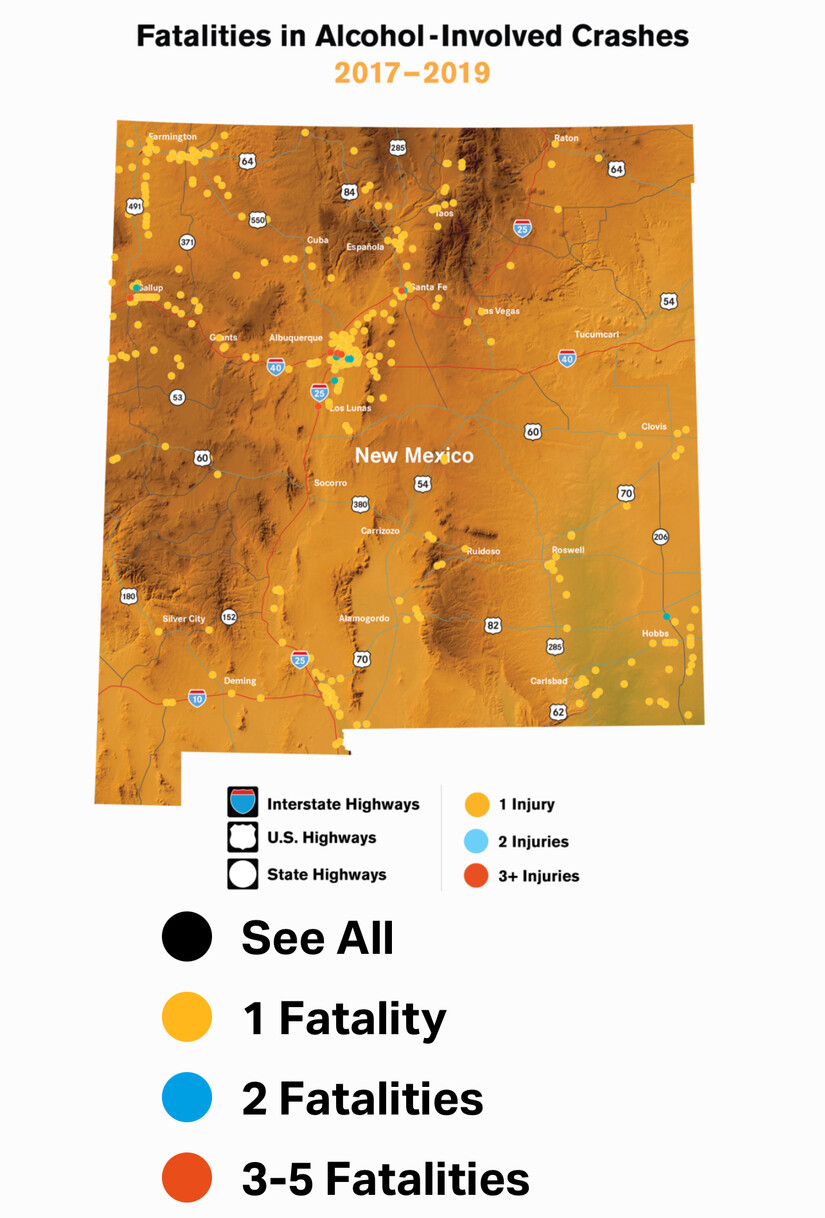Image


The New Mexico State Police have announced they will be conducting sobriety checkpoints, saturation patrols; and registration, insurance, and driver's license checkpoints in all New Mexico counties during April 2025.
The New Mexico State Police is bringing awareness to these events to reduce impaired driving-related fatalities through continued media attention and intensive advertising.
These checkpoints are helping to change society's attitude about driving while under the influence of intoxicating liquor or drugs.
Hundreds of lives could be saved each year if every driver had the courage to make the right decision not to drive impaired.
Who:
New Mexico State Police
What: Sobriety Checkpoints, Saturation Patrols, and Registration/Insurance/DL Checkpoints
When: April 2025
Where: All New Mexico Counties
Why: So, we can ENDWI+ in New Mexico
Alcohol is involved in 40-percent of all fatal traffic crashes in New Mexico which makes alcohol-related traffic fatalities the single largest factor in this state’s traffic deaths. Alcohol intoxication constitutes a common, but preventable, cause of traffic crashes.
Despite significant progress in reducing DWI crashes, intoxicated drivers continue to plague New Mexico’s highways and roads.
Driving a vehicle with a blood or breath alcohol content of .08% or higher, or driving under the influence of drugs is a violation of New Mexico’s DWI laws.
A DWI conviction can have both civic and financial consequences. New Mexico drunk driving criminal court cases can result in punishment that includes jail time, fines, mandatory DWI educational programs, and more. A DWI conviction may result in a driver’s license suspension from 90 days to one year or more. Find out more by reading The High Cost of DWI in New Mexico (a DWI Laws Summary).
In addition, since the Ignition Interlock law went in to effect on June 17, 2005, anyone in the state of New Mexico convicted of a DWI, including first time offenders, must have an ignition interlock license and an ignition interlock device installed in their vehicle. For the DWI offender, the only way to drive legally is to get an ignition interlock license, proof of insurance, and have the device installed.
